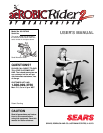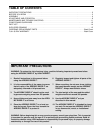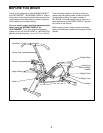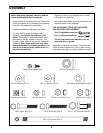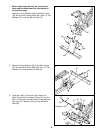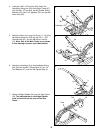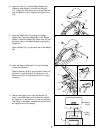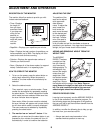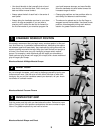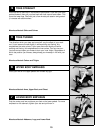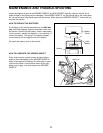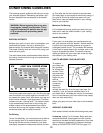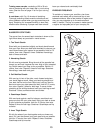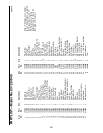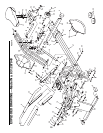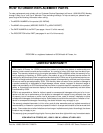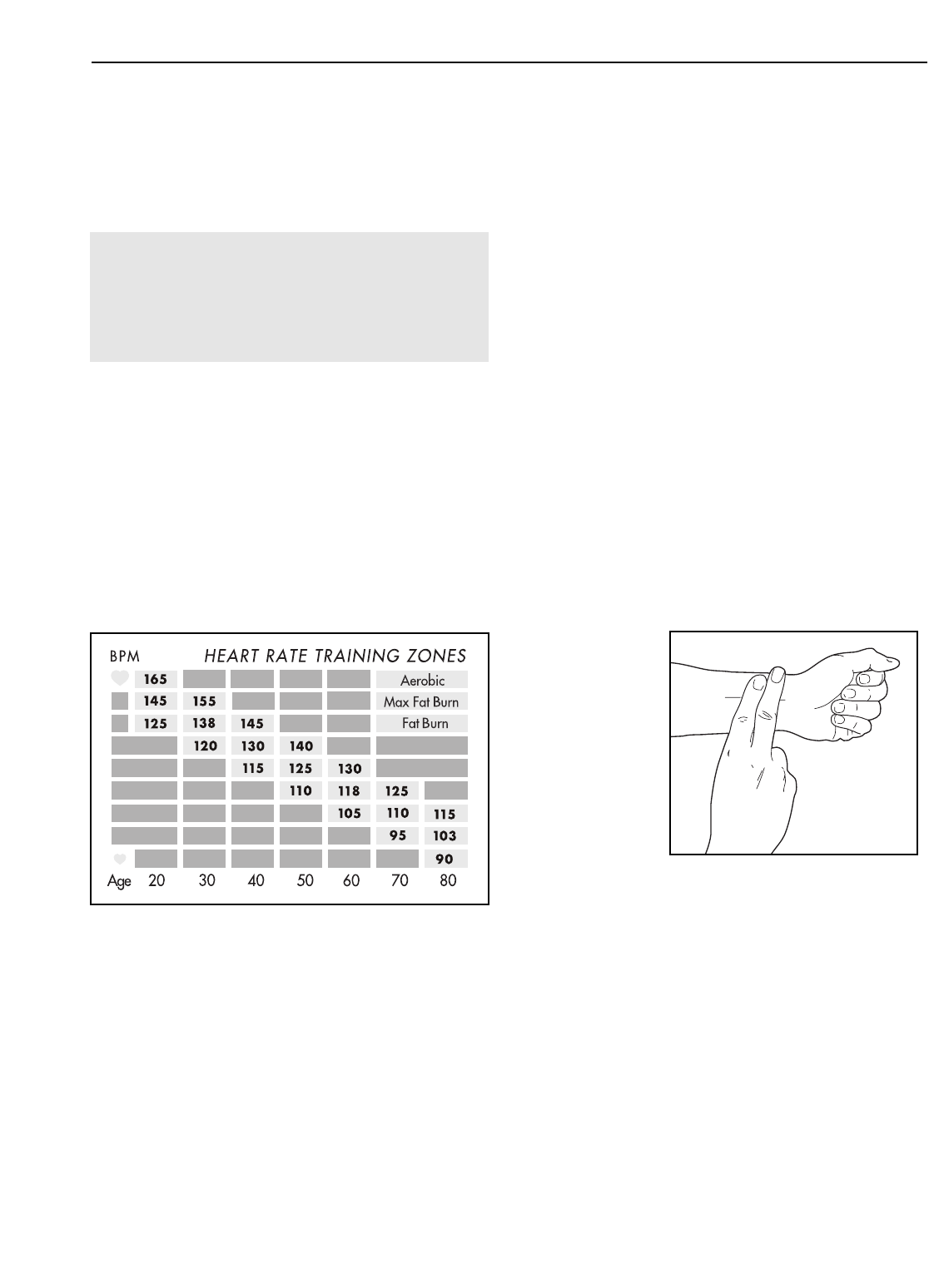
12
CONDITIONING GUIDELINES
The following general guidelines will help you to plan
your exercise program. Remember that proper nutri-
tion and adequate rest are essential for successful
results.
EXERCISE INTENSITY
Whether your goal is to burn fat or to strengthen your
cardiovascular system, the key to achieving the
desired results is to exercise with the proper intensity.
The proper intensity level can be found by using your
heart rate as a guide.
The chart below shows recommended heart rates for
fat burning, maximum fat burning, and cardiovascular
(aerobic) exercise.
To find the proper heart rate for you, first find your age
near the bottom of the chart (ages are rounded off to
the nearest ten years). Next, look above your age and
find the three numbers in light grey boxes. The three
numbers are your “training zone.” The lowest number
is the recommended heart rate for fat burning; the
middle number is the recommended heart rate for
maximum fat burning; the highest number is the rec-
ommended heart rate for aerobic exercise.
Fat Burning
To burn fat effectively, you must exercise at a relative-
ly low intensity level for a sustained period of time.
During the first few minutes of exercise, your body
uses easily accessible
carbohydrate calories
for ener-
gy. Only after the first few minutes of exercise does
your body begin to use stored
fat calories
for energy. If
your goal is to burn fat, adjust your pace until your
heart rate is near the lowest number in your training
zone as you exercise.
Maximum Fat Burning
For increased fat burning, adjust your pace until your
heart rate is near the middle number in your training
zone as you exercise.
Aerobic Exercise
If your goal is to strengthen your cardiovascular sys-
tem, your exercise must be “aerobic.” Aerobic exercise
is activity that requires large amounts of oxygen for
prolonged periods of time. This increases the demand
on the heart to pump blood to the muscles, and on the
lungs to oxygenate the blood. For aerobic exercise,
adjust your pace until your heart rate is near the high-
est number in your training zone.
HOW TO MEASURE YOUR HEART RATE
To measure
your heart rate,
first exercise
for at least four
minutes. Then,
stop exercising
and place two
fingers on your
wrist as
shown. Take a
six-second
heartbeat
count, and
multiply the result by 10 to find your heart rate. For
example, if your six-second heartbeat count is 14,
your heart rate is 140 beats per minute. (A six-second
count is used because your heart rate will drop rapidly
when you stop exercising.)
Adjust your pace until your heart rate is at the desired
level.
WORKOUT GUIDELINES
Each workout should include the following three parts:
A warm-up, lasting 5 to 10 minutes. Begin with slow,
controlled stretches, and progress to more rhythmic
stretches to increase the body temperature, heart rate,
and circulation in preparation for strenuous exercise.
(Refer to SUGGESTED STRETCHES on page 13.)
WARNING: Before beginning this or any exer-
cise program, consult your physician. This is
especially important for persons over the age
of 35 or persons with pre-existing health
problems.



